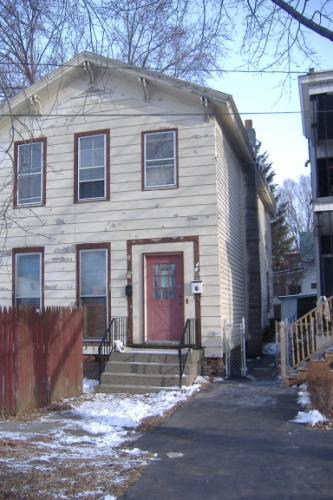Blaming the building in Troy, New York dooms historic buildings

House on 119th Street, Troy, New York. Photo by Richard Herrick.
From Richard Herrick (slightly edited):
A number of historic buildings, most having been recently occupied, are going to be demolished by the City of Troy. Most were abandoned after having been closed down under the city's Zero Tolerance program where buildings used as drug houses get inspected for code violations. Most of the owners cited for code violations abandon the properties rather than get the building back to code.
This is an unfortunate and unintended result of Troy 's Zero Tolerance" program where it seems the norm for an irresponsible landlord to abandon rather than stabilize and renovate. As it stands right now owners are given code violation notices with no apparent outreach as to how the City can help.
Perhaps a stronger pro-active effort by the City advising property owners of City programs available to them to re-open their buildings would help stem the bleeding - as it stands right now they are given bldg. code violation notices and just told to correct them. The City has had made tremendous inroads with its Zero Tolerance efforts and certainly does not need more abandoned building -- perhaps it can start a Landlord Code Compliance Grant program geared towards this problem.
----------------
Receivership would work better. Take over the building. Cure the nuisance. Bring the property back online in a manner that stabilizes and revitalizes the area, rather than it further contributing to deterioration.
Too often, city officials don't look at the entire life cycle of a property and its neighborhood, seeing demolition as a cure, rather than as a different form of "blight."
See these blog entries:
-- Blaming the building in Baltimore -- when your tool is a gun, you think only about shooting (which has a big chunk of my testimony to DC City Council about these issues)
-- Bringing buildings back is really about bringing urban neighborhoods back.

Labels: historic preservation, public safety, quality of life advocacy



0 Comments:
Post a Comment
<< Home